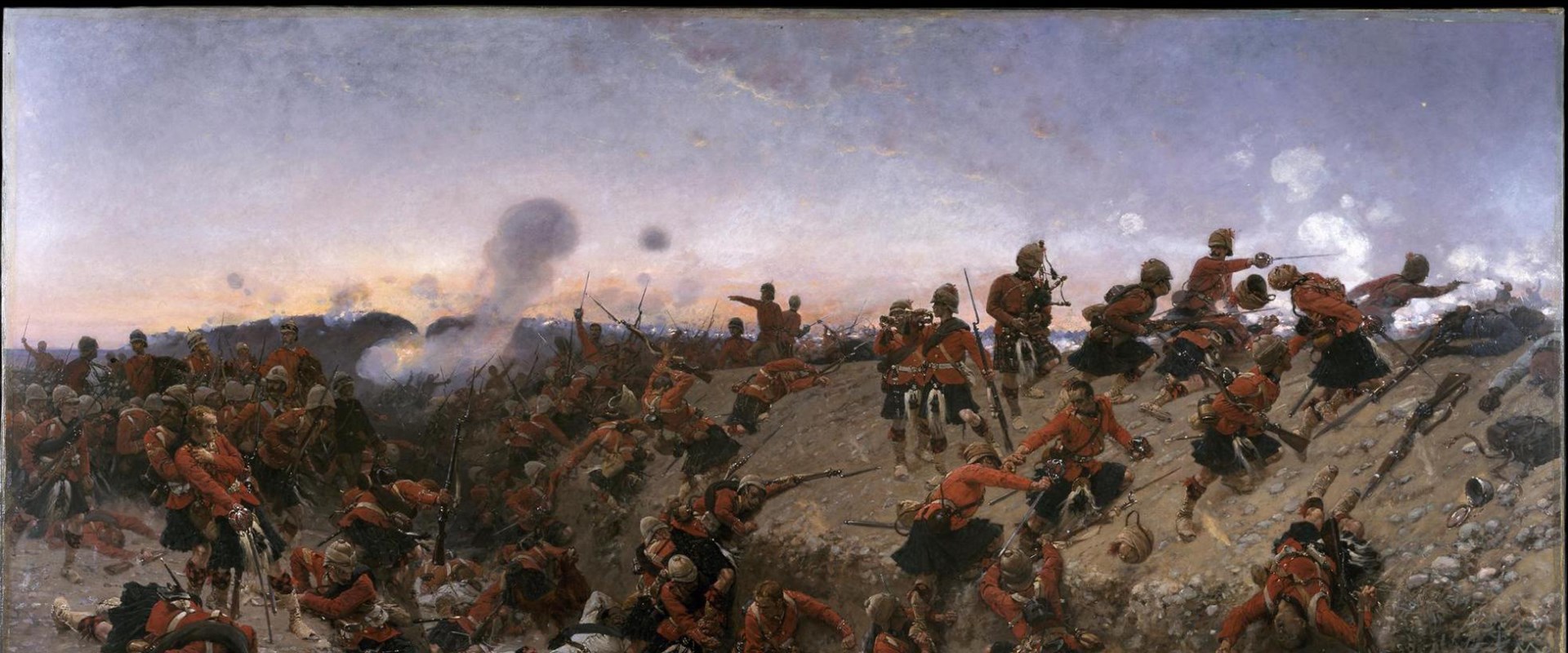Key in a search term below to search our website.
Key in a search term below to search our website.

The battle of Tel-el-Kebir was a decisive moment in the British maintaining order in Egypt in the late 19th century and its depicted in a magnificent painting at National War Museum in Edinburgh Castle.
Date
1883
Painted by
Alphonse Marie de Neuville
Medium
Oil on canvas
Dimensions
Height 221cm, width 382.5cm
Museum reference
On display
Active Service, Gallery 6, National War Museum
Did you know?
Artist Alphonse Marie de Neuville specialised in depiciting scenes of warfare. His work can be seen in the Hermitage Museum, Petersburg and the Metropolitan Museum, New York.

The battle of Tel-el-Kebir was a decisive moment in the British maintaining order in Egypt in the late 19th century. Alphonse Marie de Neuville captured the drama of the battle in this spectacular oil painting, The Storming of Tel-el-Kebir, which can be seen on display at the National War Museum, Edinburgh Castle.
In the late 19th century, Egypt was ruled by the Khedive and remained a nominal part of the Turkish Ottoman Empire. Britain and France had a substantial interest in the country due to the Suez Canal. In the 1870s, through mismanagement and corruption, Egypt neared financial collapse and experienced political instability.
The then British Prime Minister, Gladstone, sent an expeditionary force to restore order and install a new administration. Between 13 July and 6 September 1882, two armies, one (24,000-strong) from Britain and the other (7,000-strong) from India, converged on Egypt under the command of Lieutenant-General Sir Garnet Wolseley. Over 40 Royal Navy warships were involved in securing the Suez Canal from both the Red Sea in the south and the Mediterranean in the north.
Minor skirmishes between British and Egyptian forces took place at Zagazig and Kassassin, but it was the battle at Tel-el-Kebir (strategically placed between Alexandria, the Suez Canal and Cairo) that proved decisive.
The desert around Tel-el-Kebir was extremely flat, so any approach by the British would easily be spotted. As a result, the British decided to march across the desert by night and attack the Egyptian positions at dawn.
At about 05:00 on 13 September 1882, the Highland Brigade approached the Egyptian positions and there was a blaze of gunfire. The bagpipe players struck up and the Scots regiments charged the Egyptian defences. The British army had approached the lines at Tel-el-Kebir in a staggered formation and so attacked in waves from left to right.
The fighting was intense, but after just over an hour, the Egyptians fled. Once Tel-el-Kebir was in British hands, a number of infantry and cavalry divisions moved off to secure other positions. These included a triumphant march on Cairo on 14 September.
In 1888 an international convention allowed vessels of any nation to use the Suez Canal. Egypt became a British protectorate in 1914 and two decades later it gained independence from Britain. However, it retained its garrison and air bases and continued to enjoy naval facilities at Alexandria. In 1956, Egypt nationalised the Suez Canal in order to raise revenue which led to the Suez Crisis
Alphonse Marie de Neuville was a French Academic painter who studied under Eugène Delacroix. His dramatic and intensely patriotic subjects illustrated episodes from the Franco-Prussian War, the Crimean War and the Zulu War and portraits of soldiers. Other examples of his work can be seen in the Hermitage Museum, Petersburg and the Metropolitan Museum, New York.